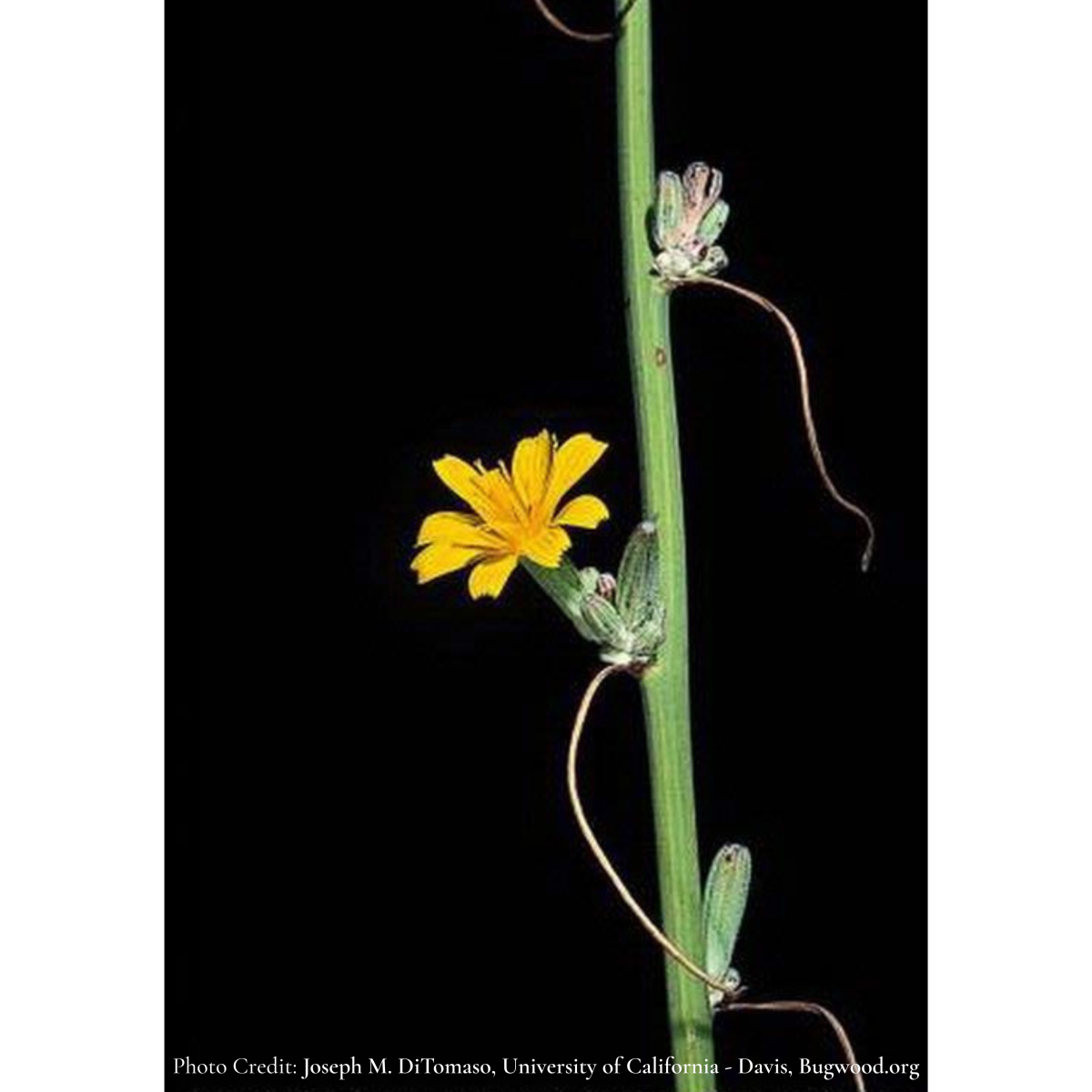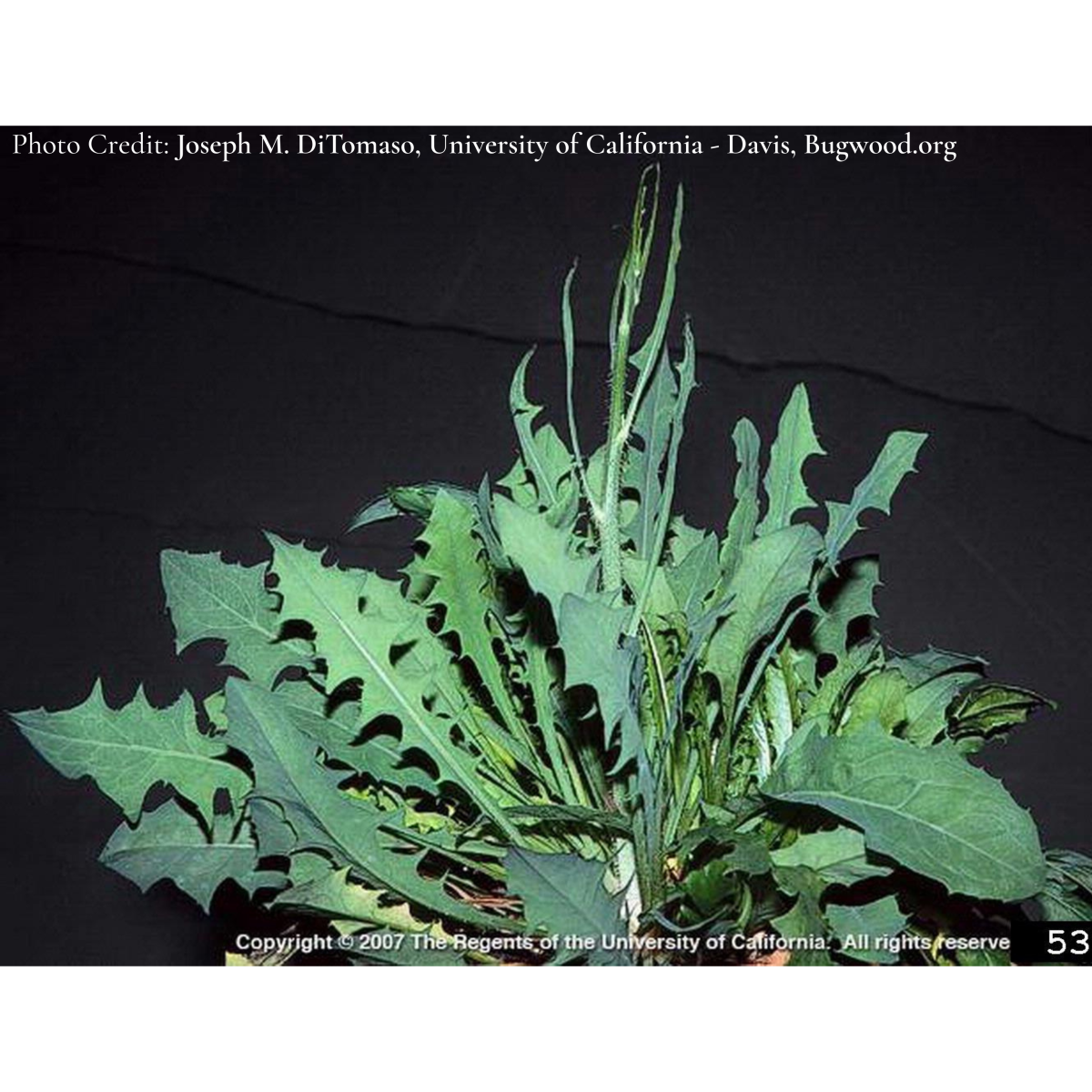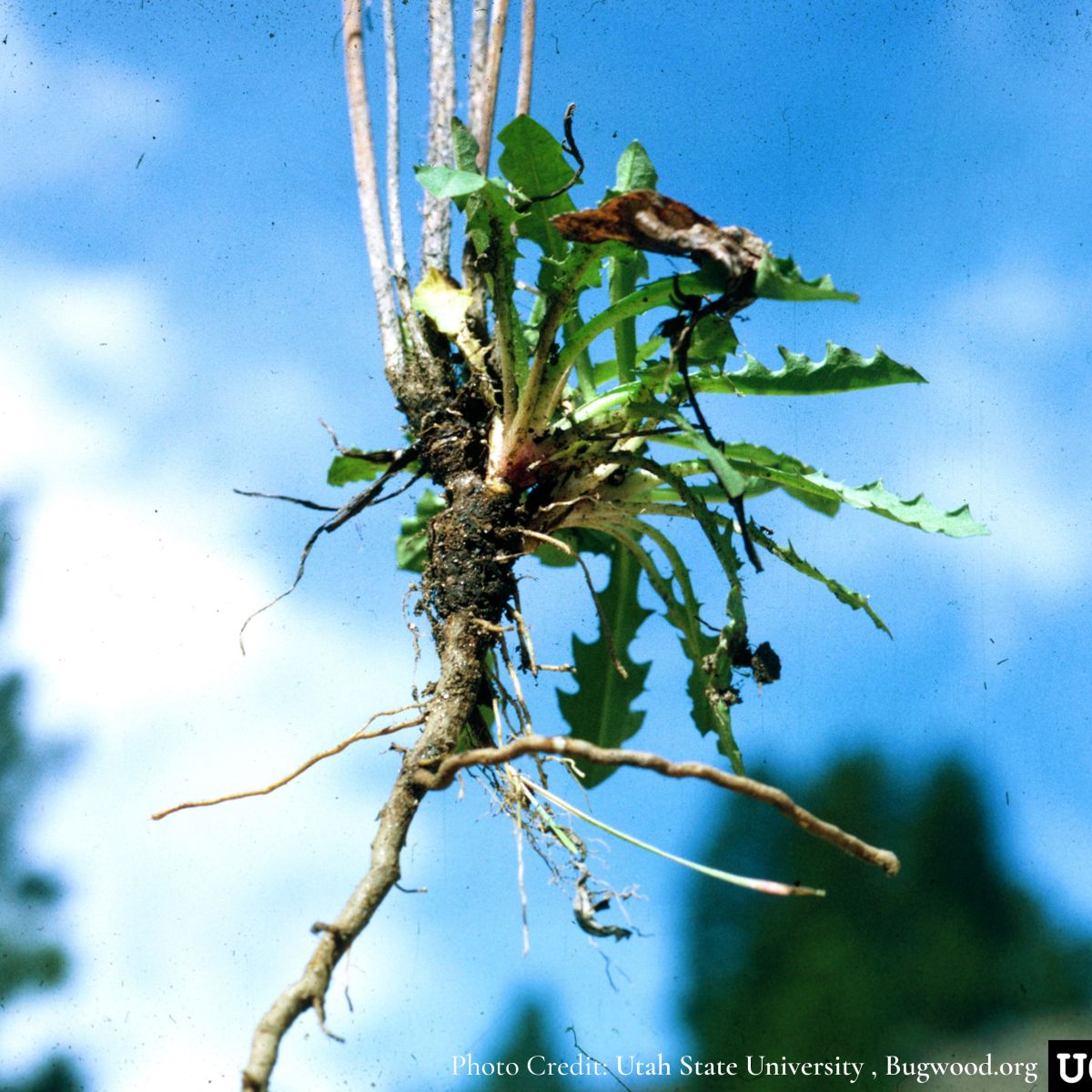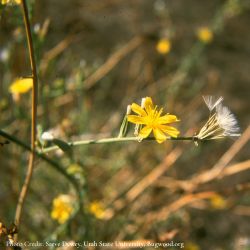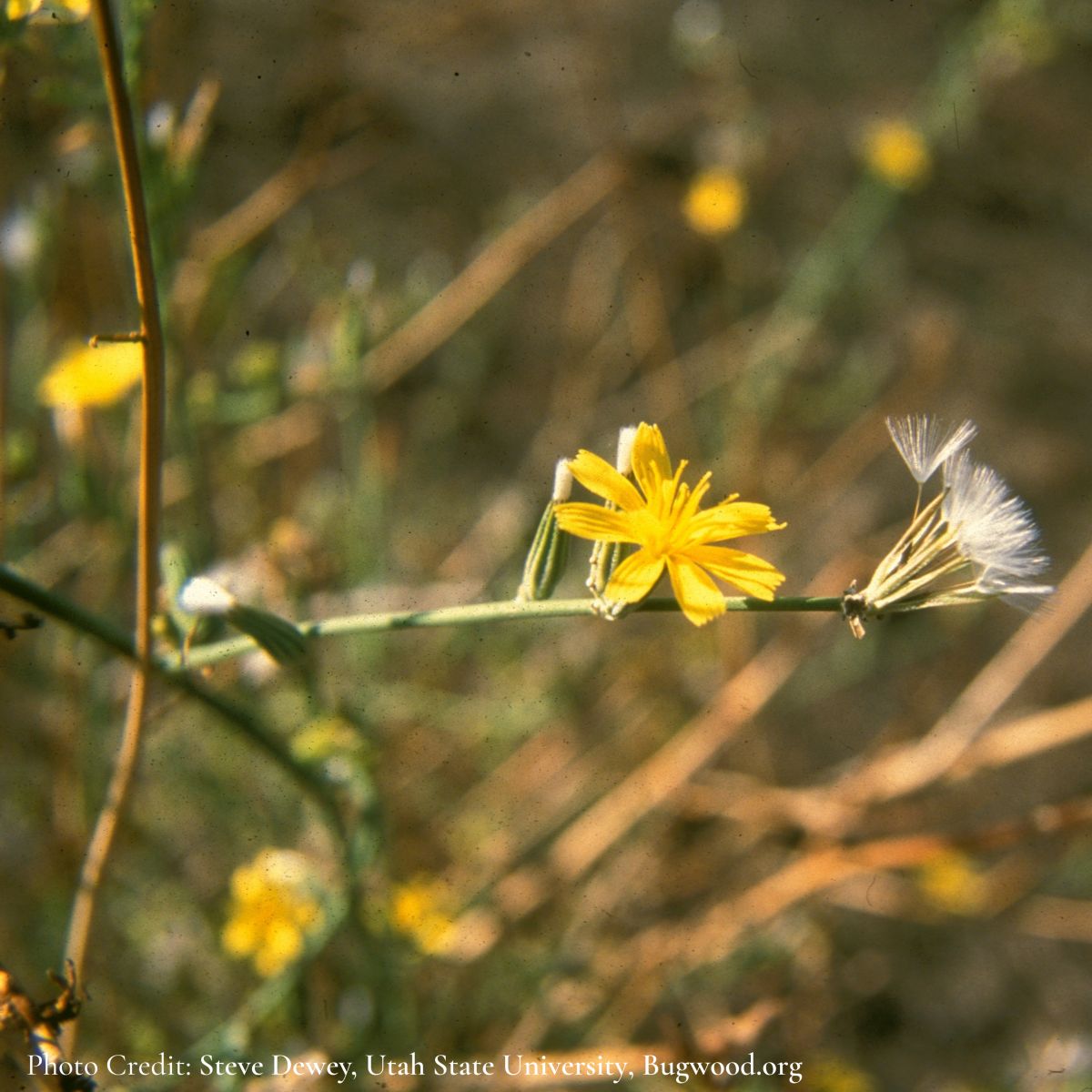
Priority: Prevent
General: Perennial herb. Leaves are small, giving the plant a skeleton-like appearance.
Height: 0.4 - 1.3 meter in height.
Flowers: Flowers are yellow and found at the end of the branches either singles or in groups of 2-3. Each flower head contains 10 – 12 strap-shaped petals that are flat across the end with distinct teeth.
Leaves/Stems: Stems are branched, rushlike, with milky juice. The base of the stem is coarse with downward pointing stiff hairs. Basal and lower stem-leaves are sharply toothed & 5 – 13cm long; these fall off. Middle & upper stem leaves are alternate, reduced, & linear. In the early spring, the rosette can resemble a dandelion.
Root: Taproot. Can reach 2.5 meters deep.
Skeletonweed
Gum Succory
Devil’s Grass
Naked Weed
Hog-bite
Skeleton Plant (Lygodesmia juncea) has pink, occasionally white flowers. Native.
Narrow-leaved Wire Lettuce (Stephanomeria tenuifolia) has pink, occasionally white flowers. Native.
Mustards (Brassicaceae) Rush skeletonweed can be distinguished from other plants by its leaves that have a smooth surface & leaf lobes that project backwards. It also produces a milky latex sap when the stem is broken, and even young rosettes have a long taproot.
Where did it come from? Native to southern Europe.
Where does it grow here? It has not been detected in the LRISS region. Rush Skeletonweed can grow in a variety of habitats like grasslands, rangelands, roadsides, and disturbed areas at low elevation.
Reproduction: Reproduces by seed & vegetatively from roots. Seeds remain viable in the soil for 6 – 18 months. Rosettes develop from root buds in autumn or from seed.
When does it grow, flower & seed? Flowers July to September or fall frosts.
Spreads By: A single plant may produce 20,000 seeds, which are dispersed by wind, water, animals, machinery such as farm equipment, & humans.
Plant Type: Perennial forb.
- Will displace native plants but rarely invades healthy native plant communities.
- Reduces livestock & wildlife forage.
- Extensive & deep root system makes it difficult to remove.
- Latex in the stems causes problems for crop-harvest machinery.
- Review your property regularly for this species.
- Treatment Hand-pulling can be used on small patches, but repeated treatments would be necessary due to the extensive root-system. Cutting & mowing is not effective.
- Cover bare patches or disturbed soil by planting or seeding with non-invasives.
- Check areas where you have removed invasives for any new plants that year and in future growing seasons.
- Dispose of invasive plants responsibly. Bag them for disposal at the local landfill. Composting and burning are not recommended.
- Contact LRISS for specific treatment recommendations.
EFlora website.
Sea to Sky Invasive Species Council website.
Okanagan Invasive Species Online
British Columbia Ministry of Agriculture, Food and Fisheries. Guide to Weeds in British Columbia. First Edition. Province of British Columbia, 2002.
Photo Gallery
